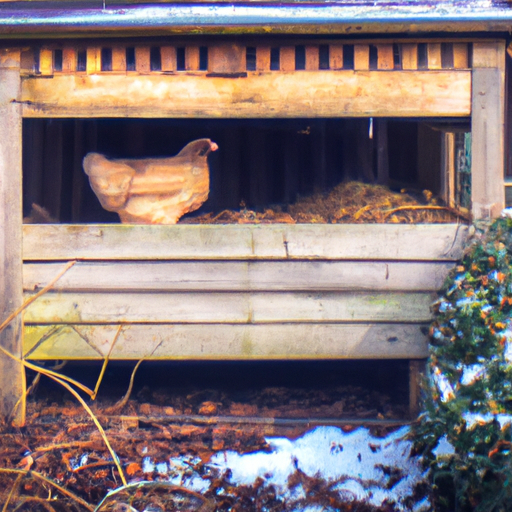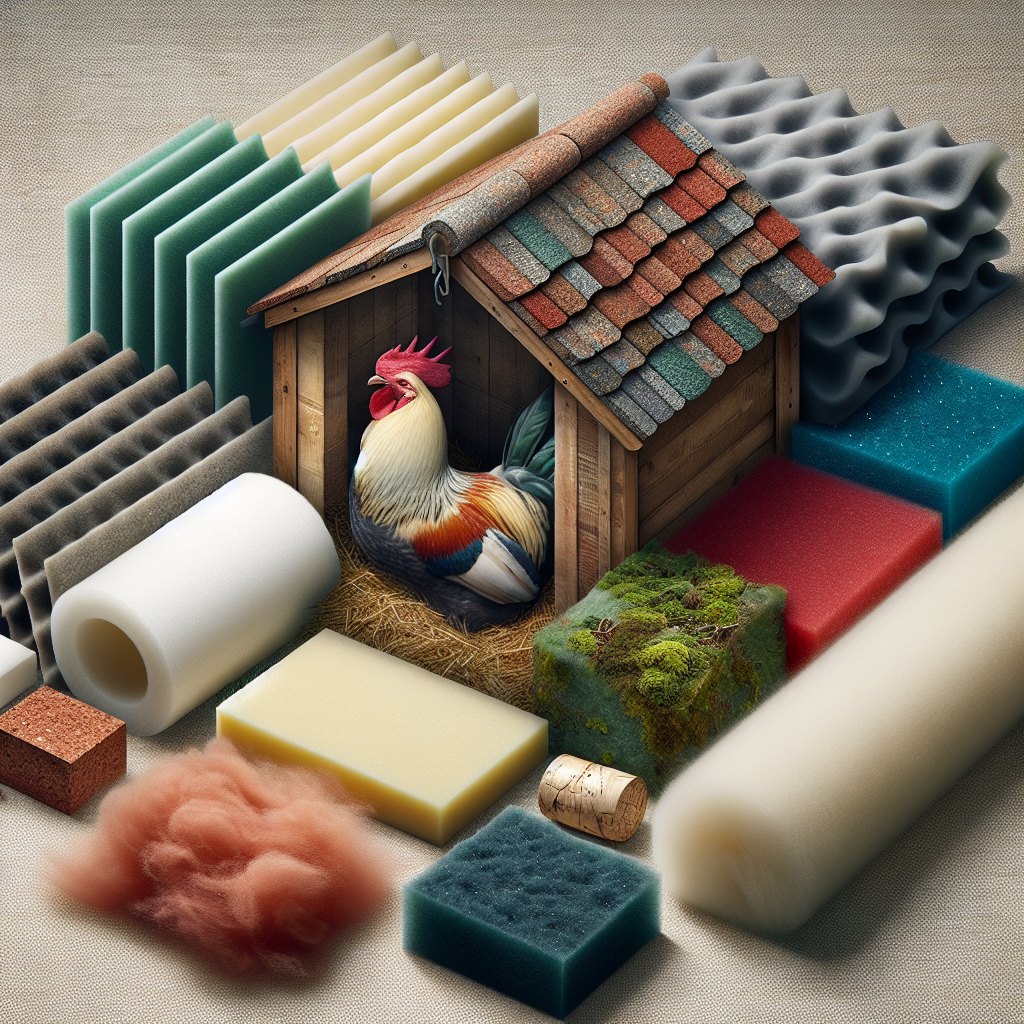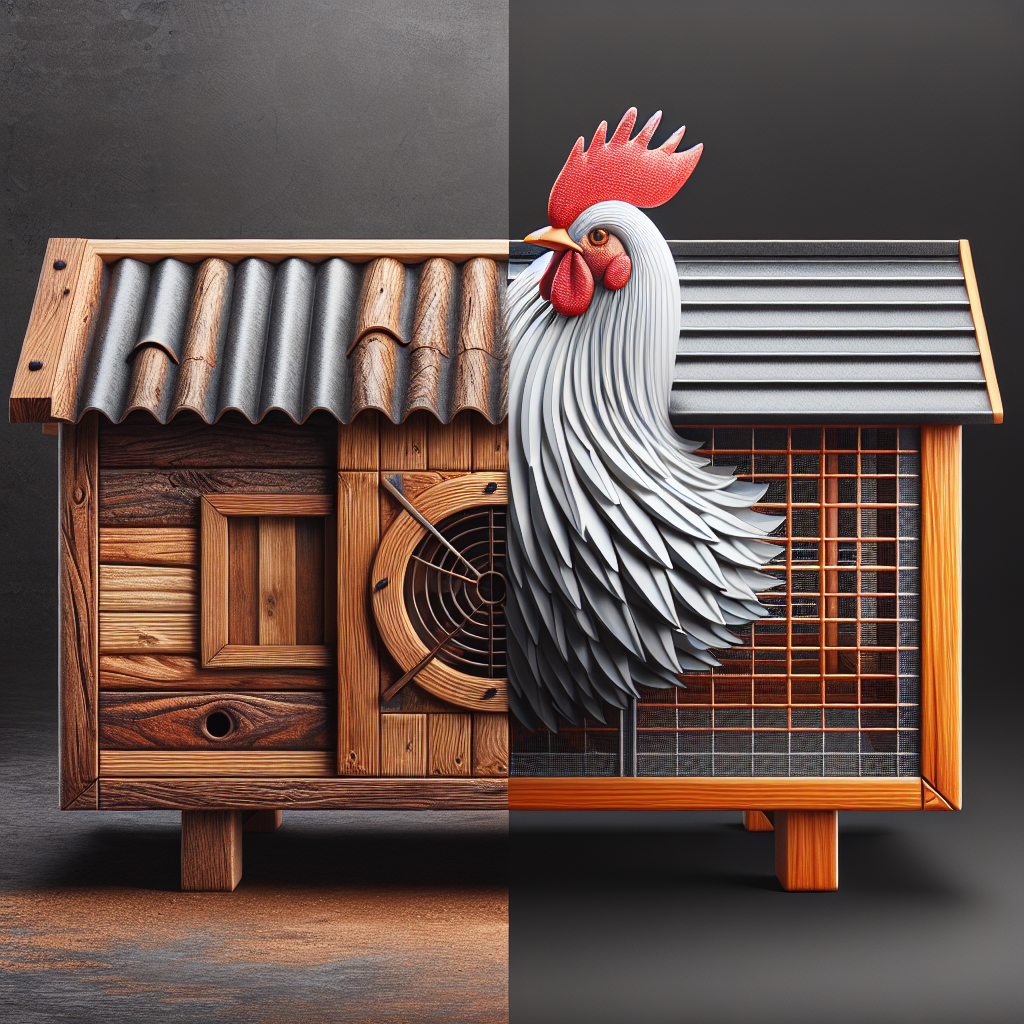Ever wondered how the choice of materials can greatly impact the overall look and appeal of a chicken coop? It may surprise you how the right selection of materials can transform a simple structure into a charming and visually pleasing addition to your backyard. From the rustic charm of wood to the modern elegance of metal, each material offers a unique aesthetic that can help create a coop that not only functions well but also becomes a delightful focal point in your garden. Explore the captivating world of material choices for chicken coops and discover how the right selection can truly enhance the beauty of your poultry haven.
Wood
Wood is a popular choice for chicken coops due to its traditional and rustic look. It adds charm and character to the overall design, creating a cozy and inviting atmosphere for your feathered friends. The natural and organic feel of wood blends seamlessly with the environment, making the coop feel like a part of your backyard. Not only does wood enhance the aesthetics, but it also provides durability and long-lasting performance. With proper maintenance and treatment, a wooden chicken coop can withstand various weather conditions and stand the test of time. Another advantage of wood is the possibility of customization. Whether you want to paint it in a vibrant color or add decorative elements, wood can be easily modified to suit your preferences and create a unique look that reflects your personal style.
Metal
For those who prefer a sleek and modern look, metal can be an excellent choice for a chicken coop. Its clean and polished finish adds a touch of sophistication to your backyard, creating a visually appealing structure. Metal coops also have the advantage of being strong and resilient, ensuring the safety and security of your chickens. They are less susceptible to damage from predators and can withstand harsh weather conditions. In addition, metal coops require low maintenance compared to other materials. They do not need frequent painting or staining, making them a convenient option for busy chicken owners. However, it’s important to note that metal can heat up quickly under the sun, so proper insulation and ventilation must be ensured to maintain a comfortable environment for the chickens.
Plastic
If you’re looking for a colorful and vibrant chicken coop, plastic might be the ideal material for you. Plastic coops come in a variety of bright hues, allowing you to add a pop of color to your backyard. The lightweight and portable nature of plastic makes it easy to move and reposition the coop as needed. Moreover, plastic is easy to clean, as it can be washed down with water or wiped clean with a damp cloth. However, it’s important to consider that plastic may not be as durable as other materials. It can be prone to cracking or fading over time, especially when exposed to direct sunlight and extreme temperatures. Therefore, regular maintenance and protection from harsh weather conditions are necessary to prolong the lifespan of a plastic chicken coop.
Wire Mesh
Wire mesh is a popular choice for chicken coop construction due to its simple and industrial look. The mesh provides ventilation and visibility, allowing air to circulate freely and enabling you to keep an eye on your chickens. The primary advantage of wire mesh is its ability to prevent predator entry, ensuring the safety of your flock. While it offers protection against larger predators, such as foxes and raccoons, smaller predators like snakes or rats may still be able to access the coop. Additionally, wire mesh may not provide sufficient insulation during colder seasons. Extra measures may need to be taken to maintain a comfortable temperature within the coop, such as using heat lamps or insulating materials.
Stone
For a sturdy and robust chicken coop, stone is an excellent choice. Its natural blend with the environment creates a harmonious and visually appealing structure. Stone not only enhances the aesthetics, but it also provides excellent insulation, keeping your chickens warm during winter and cool during summer. However, it’s important to consider the expense and weight associated with stone. Building a stone chicken coop can be costly due to the materials and labor required. Additionally, the weight of the stone structure makes it challenging to modify or move the coop if necessary. Careful planning and consideration of these factors are essential before deciding to build a stone chicken coop.
Concrete
Concrete offers a modern and minimalist design option for a chicken coop. Its durability and secure structure provide peace of mind, knowing that your chickens are safe from predators. Concrete coops are also predator-proof, preventing any unwanted entry or damage. However, it’s important to note that concrete is difficult to modify or move once it is set. Therefore, careful planning and consideration of the coop’s layout and design are essential beforehand. The permanent nature of concrete may not appeal to those who prefer options that can be easily adjusted or relocated. Nonetheless, if you value security and longevity, a concrete chicken coop may be the ideal choice for you.
Bamboo
For an exotic and unique appearance, bamboo can add an interesting touch to your chicken coop. Its natural and eco-friendly attributes make it an appealing choice for environmentally conscious chicken owners. Bamboo is flexible and lightweight, making it easy to work with and install. However, it’s important to note that bamboo requires regular maintenance due to its vulnerability to weathering and pests. Regular inspections and treatments are necessary to ensure the longevity and structural integrity of a bamboo chicken coop. Despite these considerations, a bamboo coop can create a visually striking focal point in your backyard, adding an element of natural beauty to the overall landscape.
Glass
If you’re aiming for a sophisticated and stylish chicken coop, glass can instantly elevate the aesthetics. Its transparent nature offers visibility and allows natural light to enter the coop, creating a bright and pleasant environment for your chickens. However, it’s important to note that glass requires diligent cleaning to maintain its clarity and prevent smudges or stains. Additionally, glass is prone to breakage, especially in areas with extreme weather conditions or active animals. Therefore, precautions must be taken to protect the glass and ensure the safety of your chickens. While glass may not be the most practical choice for a chicken coop, it can certainly add a touch of elegance and luxury to your backyard.
Recycled Materials
Using recycled materials for a chicken coop can be an environmentally friendly and creative choice. It adds an artistic appeal to the structure, showcasing your commitment to sustainability. Moreover, repurposing materials can give your coop a unique and personalized touch. However, it’s important to consider that recycled materials may lack durability compared to new ones. Proper maintenance and protection are necessary to ensure the longevity of a coop built with recycled materials. Furthermore, the availability of suitable materials may vary, so careful planning and sourcing are essential to execute a successful and aesthetically pleasing recycled chicken coop project.
Fabric/Tarp
Fabric or tarp can provide versatility and adaptability to your chicken coop design. Its affordability and ease of installation make it a popular choice for temporary or movable coops. Fabric or tarp can be easily draped or attached to a frame, providing shelter and protection for your chickens. However, it’s important to note that fabric or tarp may not provide sufficient protection against harsh weather conditions or predators. Repairs or replacements may be necessary over time due to wear and tear. Nonetheless, fabric or tarp can serve as a temporary solution or a convenient backup option to provide immediate shelter for your chickens.
In conclusion, the choice of materials for your chicken coop significantly influences its aesthetics and visual appeal. Whether you prefer a traditional and rustic look with wood, a sleek and modern appearance with metal, or a colorful and vibrant vibe with plastic, each material has its unique characteristics and advantages. Considering the durability, maintenance requirements, insulation, and customization possibilities of each material is crucial in creating a chicken coop that not only looks visually appealing but also provides a safe and comfortable environment for your feathered friends.




